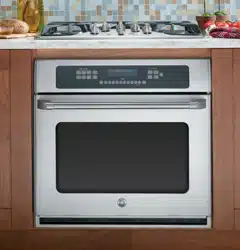
PK916–27s Single Wall Oven
PK956–27s Double Wall Oven
PT900-30s Single Wall Oven
PT916–30s Single Wall Oven
PT956–30s Double Wall Oven
PT958-30sDouble Wall Oven
CT918-30s Single Wall Oven
CT959-30s Double Wall Oven
Owner’s Manual
GEAppliances.com
Safety Instructions ...................2–4
Operating Instructions
Clock and Timer .......................................9
Control Lockout ........................................9
Controls ........................................................5
Convection .......................................13–15
Oven..........................................................6-8
Probe ..........................................................11
Proofing .....................................................12
Sabbath Feature ...................................22
Self-Cleaning Oven .......................18, 19
Special Features ............................20, 21
Thermostat ..............................................17
Timed Baking
and Roasting ...................................10, 16
Warming ...................................................12
Care and Cleaning
Aluminum Foil .........................2, 4, 6, 18
Cleaning Oven Door ............................24
Control Panel ..........................................26
Lift-Off Oven Door ................................24
Light Bulb .................................................23
Probe ..........................................................24
Racks ..........................................................25
Removing Packaging Tape ..............23
Stainless Steel Surfaces ....................26
Troubleshooting Tips .........27-29
Accessories ........................................30
Consumer Support
Consumer Support ...............................34
Warranty .................................................33
Write the model and serial
numbers here:
Model # __________________
Serial # ___________________
You can find them on a label
on the front of the oven behind
the oven door on single oven models, or
the front of the lower oven behind
the oven door on double oven models.
Built-In Oven
Electric Self-Cleaning
Printed on
Recycled Paper
49-80717 04-14 GE
Loading ...
Loading ...
Loading ...

